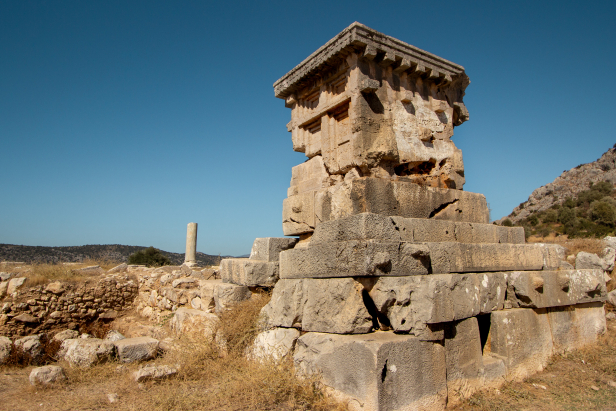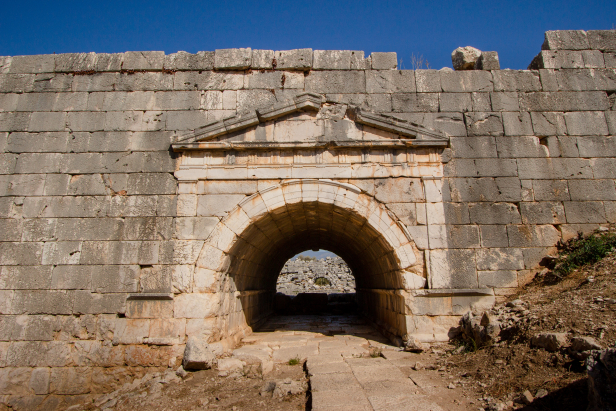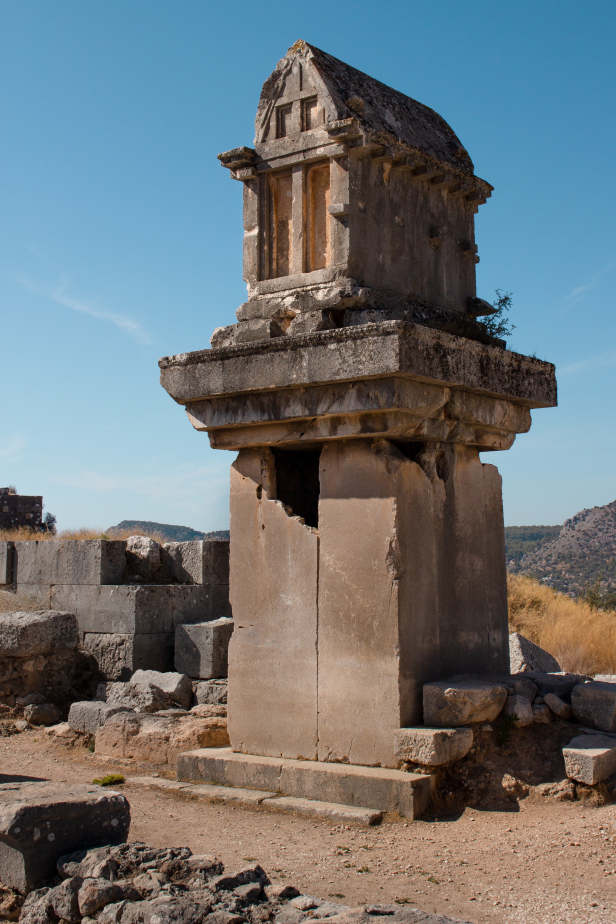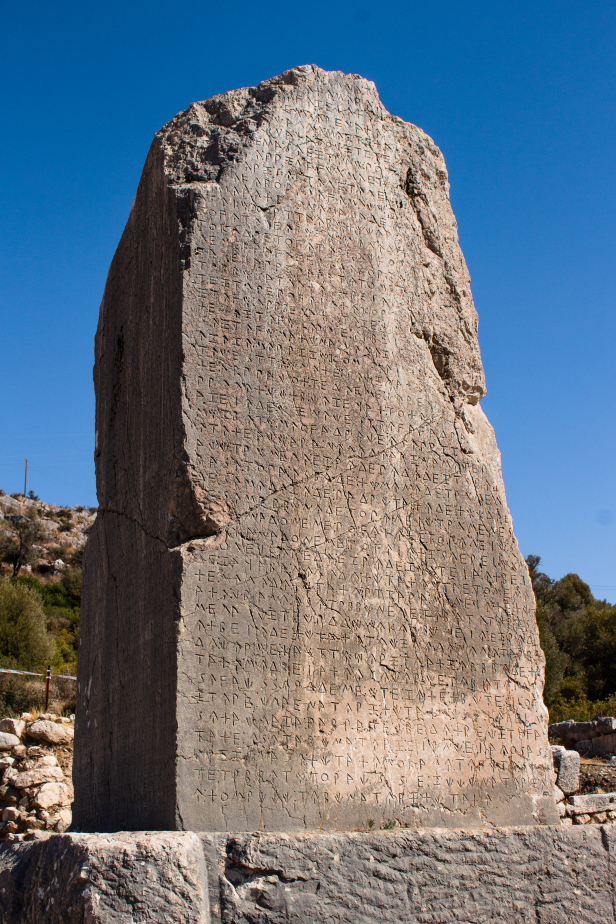Ancient Sites of Xanthos and Letoon
/ By Josh
Xanthos and Letoon are twin sites about 5 km apart which straddle the Xanthus River (now the Eşen Çayı) as well as the Antalya-Muğla provincial border with Xanthos in Antlaya and Letoon in Muğla. Xanthos was a major centre of Lycian civilization with Letoon serving as a nearby holy site comprised of a number of temples, shrines, and a large theatre.

The most famous episode in the history of the city of Xanthos is also its most tragic. According to Heredotus, the fiercely independent Xanthians, when attacked by the far more powerful Persians, enclosed their women and children in the acropolis and set it on fire killing all inside, before charging the Persian army and all dying. Only 80 families who happened not to be present at this time survived to rebuild the site after the tragedy.
Subscribe to The Art of Wayfaring
While little is known, myth or truth, concerning the founding of Xanthos there are a number of stories concerning the founding of Letoon. Letoon is named after the Nymph Leto who bore two children (Apollo and Artemis) to Zeus. She was chased away by Hera, the jealous wife of Zeus, and eventually came to the place now known as Letoon where she is said to have come across a spring and, when she went to drink, was chased off by some shepherds. In revenge she turned the shepherds into frogs, which were said to inhabit the fountain-shrine built for her there.

The twin sites of Xanthos and Letoon have been celebrated as UNESCO World Heritage Sites since 1988 for their importance in the development of Lycian and later Greek culture and architecture. These sites are also important as numerous monumental inscriptions were found here in both the Greek and Lycian language which has added richly to our understanding of Lycian language and culture.
Why Visit?
Xanthos
Xanthos Örenyeri
Cost: 10TL
Müze Card Accepted

The site of Xanthos was excavated relatively early for Anatolia by British archeologist Charles Fellows in 1838. It was during this period that the magnificent Nereid Monument was removed and brought to the British Museum.

If you visit Xanthos today, you will likely pass the large, historic gateway of Emperor Vespian (AD 69-79) perched awkwardly on the left side of the road that bisects the ruins. The most striking elements of the site are on the Western side of the site, across from the parking lot and ticket booths. This site is made up of the agora and a large funerary monument covered in inscriptions describing the struggle for independence from Athens, all written in the Lycian language. In the Western portion of the site is also an impressive theatre which is backed by the Lycian period acropolis in which you can clearly see the many layers of ruin and occupations. There’s also the foundation of a Byzantine era church on the top. Most importantly, between the agora and the theatre are three pillar tombs from both the Lycian and Roman periods. The grandest of which, the Harpy Tomb or Nereid Monument, is now in the British Museum.


The eastern portion of Xanthos, being much less striking though far larger, is scattered on the slopes beyond the parking lot. Follow the partially excavated street into the bushes where monuments and church ruins are scattered throughout. At the top of this hill lays the Roman acropolis.
Letoon
Letoon Örenyeri
Cost: 5TL
Müze Card Accepted

Letoon is made up of a handful of Temple sites, with some dating back to the fourth century BC, such as the Nymphaion of Leto, a Hellenistic and Roman era Portico in Ionian and Doric styles, as well as a much later Byzantine Church. A little separate from these and by far the largest structure at the site is a theatre built into the hillside.

Also noteworthy is a trilingual stone that was found here, inscribed with Lycian, Greek, and Aramaic text, and so is an excellent tool in understanding the Lycian language.
Despite being lauded in a good number of travel guides and websites as well as getting UNESCO World Heritage Status, Letoon is not a site I would highly recommend. In fact, unless you have little else to do or have a particular reason to visit Letoon I wouldn’t bother. While the theatre was a fine example of Greco-Roman design, the rest of the site was rather underwhelming. The ruins are minimal and, other than the nymphaeum, not particularly unique. When I was there there was no water left in the Nymphaion leaving the most attractive sites messy and grime covered. When there is water in the Letoon and colonnade it is much more attractive site though there is no guarantee of this and the amount of ruins remains rather few.
How To Get There
Rental Car
Xanthos is just outside the town of Kınık where there is plenty of signage helping you get there.
Letoon on the other hand is a bit harder. From Kınık head west across the river at the foot of the Lycian acropolis of Xanthos then take your first left towards the town of Kumluova following the river. About 2km down the road take the fork to the right and stay on the main road. Just beyond the village centre turn left following some small and unofficial looking signage.
For more about car rental and driving in Turkey make sure to read our full drivers guide.
Hiking/Walking
Both Xanthos and Letoon are on the Lycian Way!
Where To Stay
As these sites are on the Lycian Way camping is an option though there are many other options as well.
The villages of Islamlar, Üzümlü, and Yeşilköy, just uphill from the larger town of Kalkan are known for their villas which, if you have a large group, can be quite affordable.
While there are a couple closer towns (Kumluova and Kınık) they are a bit sparse in regard to accomodation (I only came across one) whereas the village of Gelemiş (10 Km away) has loads of small pensions, hotels, and rental cabins. The much larger town of Kalkan is very beautiful and has plenty of everything a tourist could want.
Have any tips or info to add? Spot any mistakes? We’d love to hear about it.
